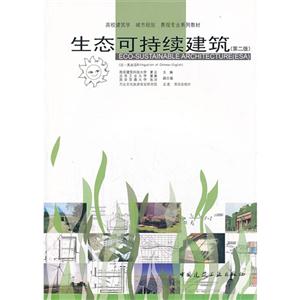-
>
中医基础理论
-
>
高校军事课教程
-
>
思想道德与法治(2021年版)
-
>
毛泽东思想和中国特色社会主义理论体系概论(2021年版)
-
>
中医内科学·全国中医药行业高等教育“十四五”规划教材
-
>
中医诊断学--新世纪第五版
-
>
中药学·全国中医药行业高等教育“十四五”规划教材
室内设计资料图集-(第二版)-(含光盘)
¥77.4¥98.0现代建筑与抽象
¥45.8¥58.0绿色建筑景观设计
¥63.2¥80.0绘画与建筑
¥31.7¥48.0SpringBoot揭秘-快速构建微服务体系
¥21.2¥59.0
生态可持续建筑-(第二版) 版权信息
- ISBN:9787112139965
- 条形码:9787112139965 ; 978-7-112-13996-5
- 装帧:一般胶版纸
- 册数:暂无
- 重量:暂无
- 所属分类:>>
生态可持续建筑-(第二版) 本书特色
夏云主编的《生态可持续建筑》全面深入系统地论述该课题在理论研究和实践方面的必要性和可行性。本书回顾和分析传统乡土建筑和现代城市建筑在生态环境方面的优缺点。本书提出2l世纪建筑何往的课题,以及发展生态建筑的出路。本书介绍太阳能及沼气的应用及技术。本书增效资源与城市形式、建筑布置,建筑构造的关系及其数学表达。本书介绍掩土建筑的特点、类型、缺点及中外实例。
生态可持续建筑-(第二版) 内容简介
《高校建筑学 城市规划 景观专业系列教材:生态可持续建筑(第2版)》是根据10年前的原书中文版本改写的,两大改进:一是采用汉一英双语;二是与时俱进进行了新陈代谢的改写,分10章:生态可持续发展的障碍;温故知今与创新;21世纪建筑何往;何谓生态可持续建筑;太阳能与沼气在建筑中的应用;增效资源;掩土建筑;建筑绿化;优化组合;生态可持续建筑的经济效益,对生态可持续建筑的理念、设计原理、方法、构造措施、材料选择进行了图文并茂的论证(述)。《高校建筑学 城市规划 景观专业系列教材:生态可持续建筑(第2版)》适用于建筑学、城乡规划、景观园林、环境艺术、环境工程、土木工程等专业研究生及本科生的教材及相关设计、科研、管理及政策制定领域人员参考。
生态可持续建筑-(第二版) 目录
-
食品添加剂
¥33.5¥45 -
VB语言程序设计
¥29.9¥39.8 -
C语言程序设计习题与实验指导
¥9.1¥18 -
地下建筑结构-(第三版)-(赠课件)
¥49.4¥55 -
模具制图
¥37.8¥49 -
工程机械结构认知
¥10.5¥22





















